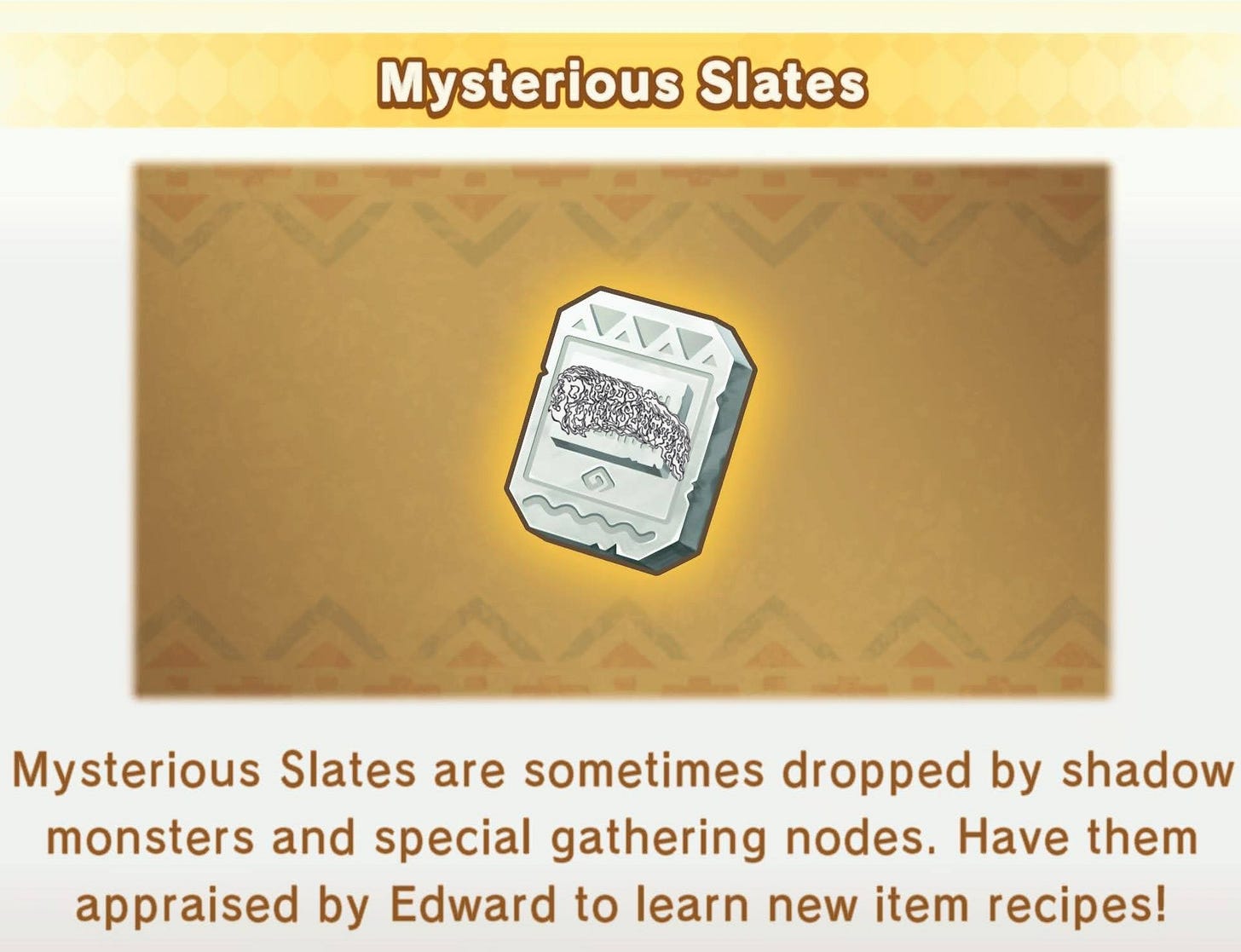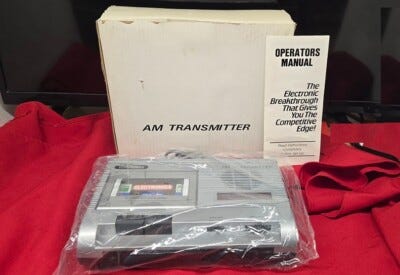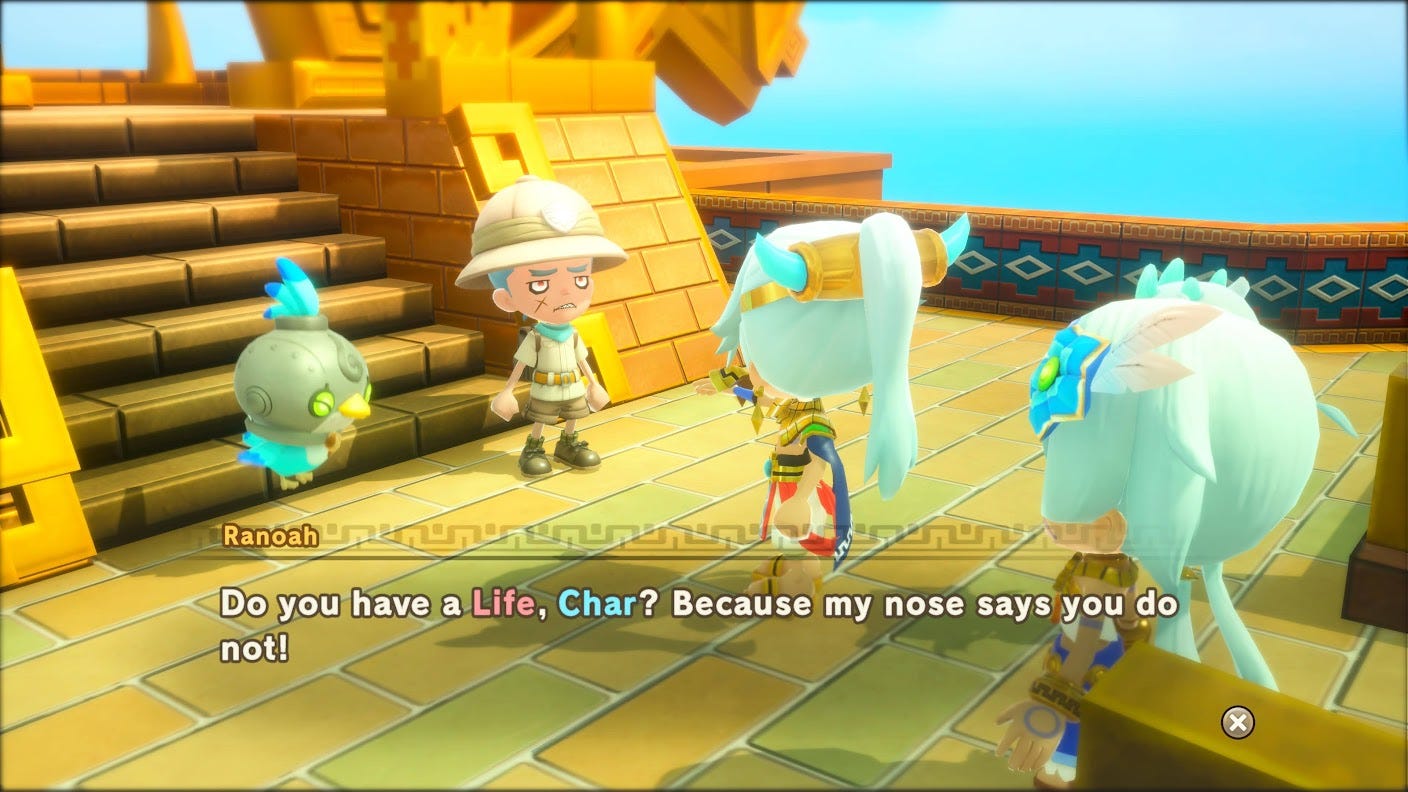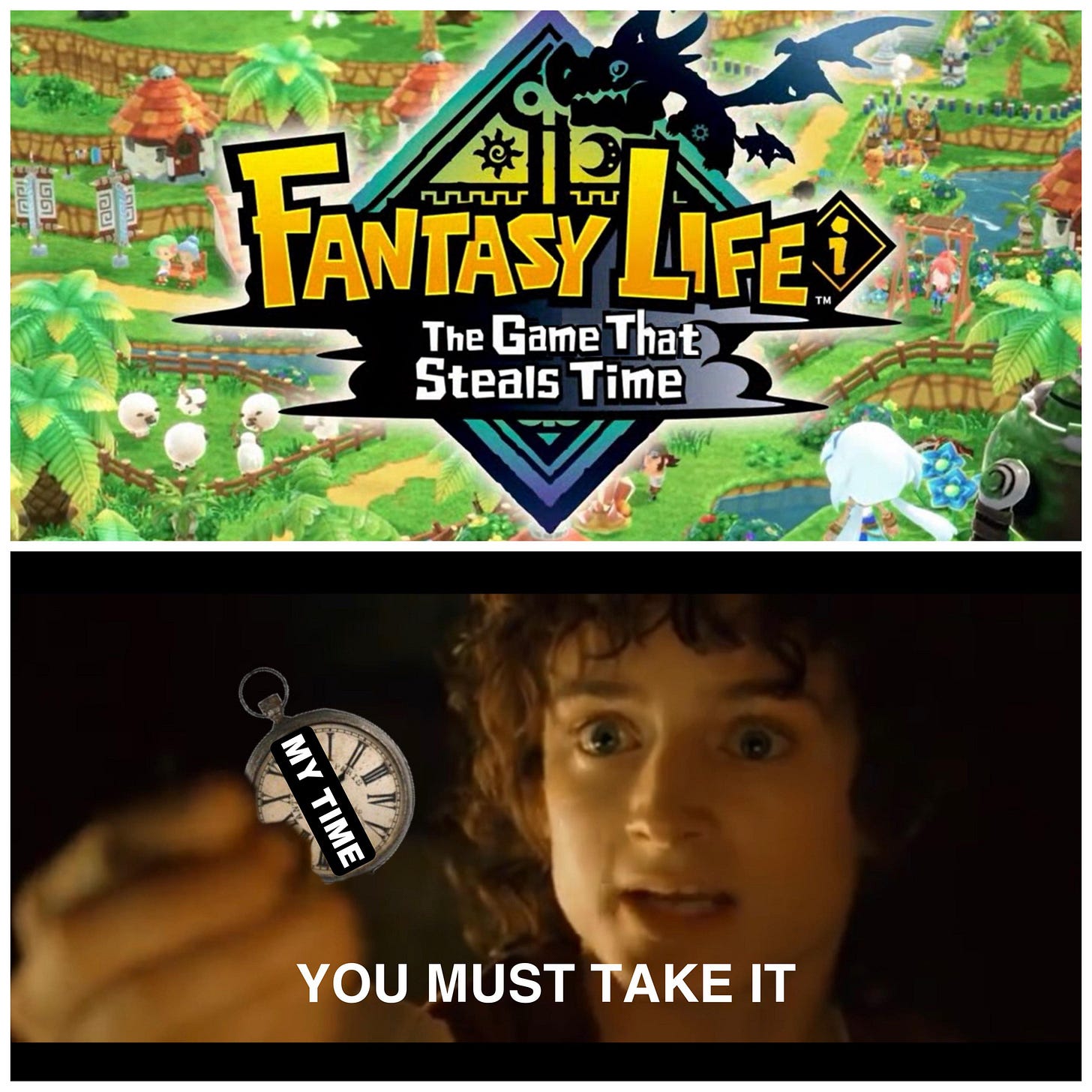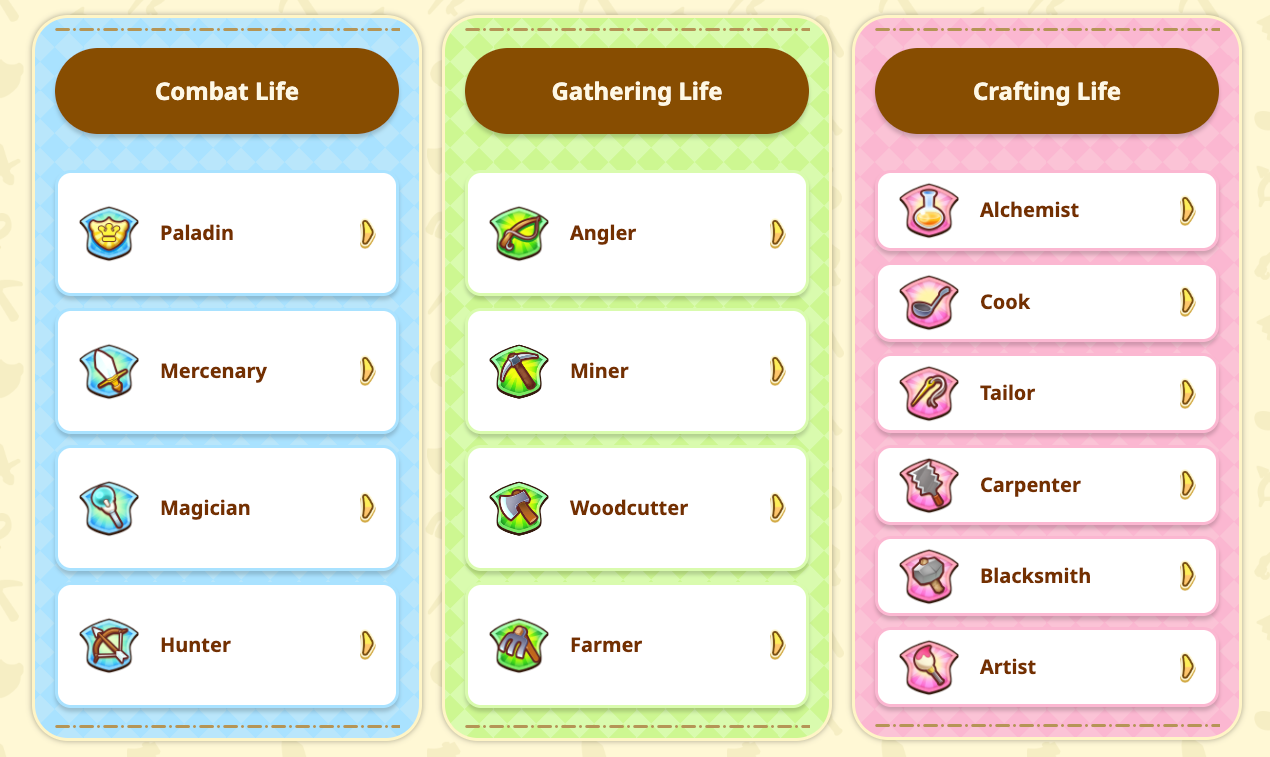Issue #382: Turn Off The Radio
In Dead Prez’s “Radio Freq,” the second verse starts:
What's on the radio? Propaganda, mind control
And turnin it on is like puttin on a blind fold
Cause when you bringin it real you don't get rotation
Unless you take over the station
That last line, “unless you take over the station,” left a strong impression on my young mind — I was probably 14 when I first heard it. I don’t know if this happens to you, but I recognize it retroactively as a Lacanian process. Certain signifiers have a grip on my unconscious, and they work each other over.
Like a lot of things in Dead Prez’s music, the idea of “tak[ing] over the station” is a utopic vision. The people as in, hoi polloi, proletariat, masses, have nots, don’t control broadcasting mechanisms just as they don’t control the means of production. So you find your own broadcasting mechanisms. If you’re lucky, college radio. Really lucky, your local NPR affiliate, maybe. Or you could do pirate radio, showcased (to me) in the Veronica Mars (2004) episode “Ahoy, Mateys!” Pirate radio doesn’t work as well with one of these, as I learned before I ever heard Dead Prez or understood the concept of a pirate radio station:
The broadcast range is short and you’re not just going to catch someone tuned into some random AM station passing them on the highway, I would come to realize at a single digit age.
With Dead Prez lyrics being transmuted in the infernal language machine of the unconscious, I came to Born in Flames (1983) as a graduate student. The movie is evocative and prescient. They have pirate radio stations — Radio Ragazza and Radio Phoenix. And they even take over a station to broadcast widely.
It was 1971 when Gil Scott-Heron announced the revolution will not be televised; a musical message about as important as Stevie Wonder’s declaration in 1976. These ideas and works of art point to the same thing. What’s on the surface is mostly rancid. Culture is a little sweeter when you dig a little deeper.
Anyway, I wrote about video games this week. And some songs on a Spotify playlist.
The Intangibles of Fun in Fantasy Life i
I have played Level-5 games since the beginning of their time as game developers. I have probably spent the largest share of time playing video games, cumulatively, that are either developed by Level-5 or adapted from their games. In 2000, I played Dark Cloud. In 2002, Dark Cloud 2. In 2004, I played Dragon Quest VIII, which was somehow developed by Level-5 and published by Square Enix. Next year was Rogue Galaxy. And things just went on from there, culminating in my year plus stint in Ni no Kuni: Cross Worlds (2021) as the 2nd in command with a top competitive guild. But, in the time between 2005 and 2021, Level-5 released a number of notable games: Professor Layton and the Curious Village (2007), Inazuma Eleven (2008), and Yo-kai Watch (2013). They also released less successful games I thoroughly enjoyed, White Knight Chronicles (2008), Danball Senki/Little Battlers eXperience (2011), Snack World (2017), and Megaton Musashi (2021).
There are some commonalities among these games. Level-5 seems to have a unique mastery of the aesthetic that dominated early 2000s U.S. localized anime aired on Fox Kids and WB. They have a fascination with Middle Eastern folklore and ancient history. Beyond that, what has stood out to me most of all is their ridiculously detailed artwork for in-game items — consumables, crafting materials, and weapons. Even as far back as Dark Cloud, they have looked great. This small sprite and the comparable 3D render won’t do the artwork justice, dated as it is by modern standards:

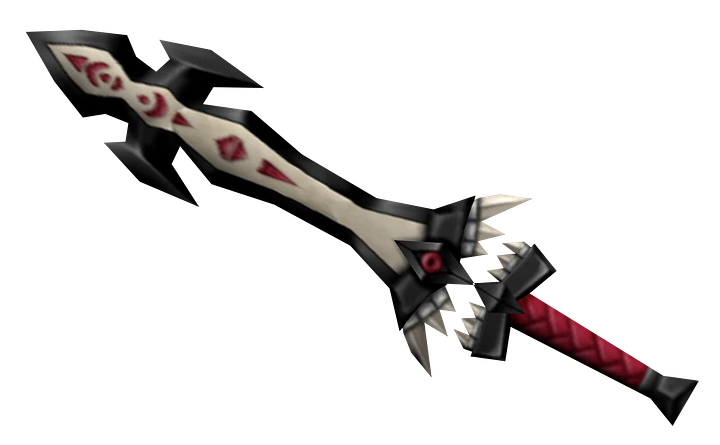
In Rogue Galaxy, slotting items into a “Revelation Flow” provided stat increases for characters. This is a unique system relative to other JRPGs, not something I’ve ever seen in any other game and that even Level-5 has even revisited:
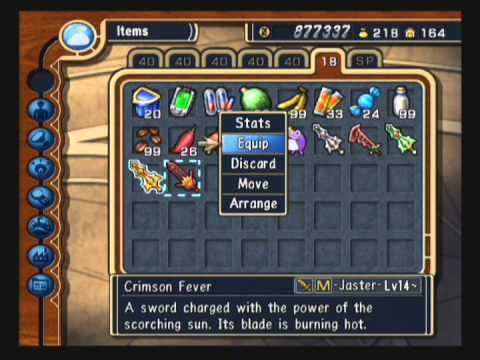
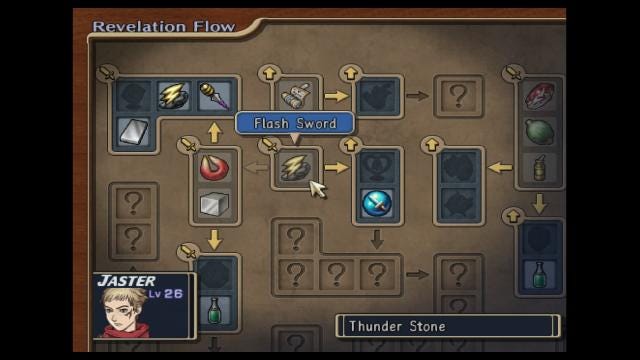
As a game system, it adds significance to item collection outside of the more conventional systems like crafting. The items feel worthy of their detailed sprite art when you need them to level up.
Both Dark Cloud and Rogue Galaxy are trailblazers when it comes to how items appear on the character. Changing your weapon is a visible change, with the sprites brought to life in the player character’s hands. Something like this had only been seen before in a few games, Chrono Trigger (1995) modestly changed a weapon’s color as one acquired more and more powerful options. Legend of Legaia (1998) and Evergrace (2000) displayed entire sets of armor and weapons on the player character. Even modern JRPGs don’t always visually represent armor changes, though for weapons it is much more common. But Fantasy Life i: The Girl Who Steals Time (2025), Level-5’s newest game, delivers on both counts. And although it has the player relating to items in a manner that is more conventional, Level-5 uses their tried and true art and design sensibilities to make the game’s items feel distinctive, covetable, and important.
Fantasy Life i is that kind of game. By that kind of game, I mean one that is best understood as a culmination of everything that came before it. It takes in a lot, not just the history of JRPG item sprites and character model customization. It is also a “farming game,” in both its agricultural subject matter and the gameplay pattern of accumulating incrementally more important resources and improved ordnance.
The story of farming games in the agricultural sense begins with Harvest Moon (1996) and for me begins with Harvest Moon 64 (1999). These games were groundbreaking when they released and are unconventional even today. They involved no combat whatsoever, instead allowing the player to improve farming tools like a hammer, sickle, and watering can. Steadily, one enlarges their farm, improves their produce, and increases the speed they can complete tasks. Because of the minimal dexterity required and exclusion of violence, Harvest Moon has gone on to spawn an entire subgenre of “cozy games” such as Animal Crossing (2001), Stardew Valley (2016), and Animal Crossing: New Horizons (2020). Even as these games focus less and less on farming explicitly, the outline of the gameplay remains pretty consistent: resource accumulation across periods of game time with other game elements sometimes occurring over real time. Animal Crossing in particular requires real time to pass for certain parts of the game to progress, thus requiring the player to play across a wider span of real calendar days to see all the game has to offer. While this system might have been intended to also gently nudge the player away from the game after a certain period each day, New Horizons was woefully unsuccessful in that regard.
Farming in the other sense is a bit more common in the history of video games. In addition to maintaining the elements of “cozy games” like Harvest Moon and Animal Crossing, Fantasy Life i does also have a robust combat system.
While Fantasy Life i’s “Gathering” and “Crafting” “Lives,” (Fantasy Life’s nomenclature for a JRPG job system) are drawn from the “cozy” sphere, the combat gameplay is similar to action RPGs like Diablo II (2000) or instanced multiplayer action RPGs like Phantasy Star Online (2000) and Monster Hunter (2004). Fantasy Life i spawns certain resources at real time intervals — every five minutes, fifteen minutes, or calendar day — but also provides multiple angles of resource accumulation through the different gameplay experiences each type of “Life” offers. There is also a strong MMORPG influence on Fantasy Life i’s Ginormosia map, which randomly spawns various instances and points of interest as you navigate the area.
Level-5 isn’t the first to attempt this synthesis. Before the original Fantasy Life in 2012, the Harvest Moon franchise introduced combat in the spinoff Rune Factory in 2006. But, in Fantasy Life’s case, combat provides even more opportunity to showcase armor and weapons you loot or forge. And while items aren’t used for skill or stat advancement as in Rogue Galaxy, some of the Lives require gathering a certain number of rare materials to increase the Life’s rank and gain access to new skills.
Because of all the different ways to play and progress, Fantasy Life i is really really addicting. The various interconnected gameplay loops are well designed. Good design, however, is not enough. All of the things I have talked about: item artwork, gameplay influences, different styles of play, all come together to make a game that is fun for all the intangible reasons a game is fun.
I’m about 80 hours deep in Fantasy Life i and I haven’t even touched any of the multiplayer components. It’s a special game in the style players of Level-5 games are accustomed. It rewards long play sessions but also is the kind of game you can pick up and play for short bursts. Hiroshi Yamauchi, Satoru Iwata’s predecessor at Nintendo, has a quotation about RPG players, calling them “depressed gamers who like to sit alone in their dark rooms and play slow games.” Fantasy Life i is the least depressing game to play alone, slowly, in a dark room.
Paradox Newsletter Broadcast Station Hijacking
An under appreciated publication venue for this newsletter, I have been maintaining a Paradox Newsletter Radio playlist on Spotify. Unlike the newsletter itself, it has not reached the level of cultural craze. I am maintaining a changelog for the playlist here, which I believe should be accessible to anyone with a Spotify account.
I wanted to touch on what’s on the playlist right now and share a quick word on each of the songs.
“悲しみがとまらない” — Anri
The English translation of this song’s title is “I Can’t Stop The Loneliness.” It sounds like a lost U.S. 80s pop hit with some city pop flare. My favorite thing about it is the juxtaposition between the depressing lyrics and upbeat tune.
“我習慣用回憶溫暖自己” — Grasshopper
Though it has a different title, this is a cover of Samantha Sang’s “Emotion” by the long running Hong Kong boy band Grasshopper. I had the song on my mind because of the end of Companion (2025).
“nantomōmottene” — DJ Chari
They are playing Yuki Chiba on American radio but they should be playing DJ Chari.
“Pachinco Man” — Boogie Man
My friend Spencer “passed” this song to me like the curse in The Ring (2002). But instead of “you die,” you groove.
“Interscope Pyro” — Durkalini
This is not even the latest hit from friend of the letter and certified hitmaker Durkalini. But it is a hit. He’s the best.
“Burbs” — Nav
“Soon as my plane touch down, I turn my phone on and it chirp / Sometimes I don't wanna see no one for days, on do not disturb / You could try me if you want, but the last one died and got put on a shirt”
“Easier to Love” — Sister Sledge
“Thinking of You” — Sister Sledge
7 & 8 came from a motown hidden gems playlist. I don’t know how that could possibly be true. We Are Family, released in 1979, sold some ridiculous number of copies and is frequently ranked among the best albums of all time. “Thinking of You” has its own wikipedia page. Still, while maybe not deep cuts, they’re good songs.
“on & on” — tofubeats
Most tenured song on the playlist, only song from its first iteration. I just can’t let it go.
“Defcon 4 (P.O.W.)” — P.S.Y.W.A.R.
Beginning the extreme music segment, P.S.Y.W.A.R. has released some of my favorite hardcore music of the last decade. Blasting blown out aggressive d-beat. I don’t think they played that much.
“Legacy of Terror” — Caustic Wound
Grindcore with a death metal flare.
“しょうがない (Shōganai)” — Nisemono 偽者
This album has really good artwork.
“Popeye” — Inspecter 7
Ska’s not dead.
“Boiling Point” — SSD
My favorite SSD song. RIP Al Barile.
"Church Ladies” — Inmates
Inmates’ Role Of God came out last week and it’s the type of album you listen to and wonder how something can be this good while other bands suck so bad.
“No Will” — Excrement
Midtempo distortion-heavy hardcore, re-released from General Speech this year.
“No Dice” — Aupheus
El Da Sensei, the featured artist on this song, is still as good as he was as a member of Artifacts in the 90s.
“Somebody’s Watching Me” — ChillinChillin
ChillinChillin raps over the Michael Jackson sung bridge of Rockwell’s song.
“Get it Correct” — Psyche Origami
Psyche Origami is a rap group with two turntablists, so like four actual turntables, whose music got used in a bunch of Adult Swim bumpers in the 2000s. I booked them at a small club in Tallahassee, Big Daddy’s, and the turntable setups barely fit on the stage. Love these guys.
“Envious” — Linda Griner
Now we’re talkin’ hidden gem. Griner has performed one of the best songs about the mistake of envy.
“Your Home” — Kuniyuki Takahashi
From the milieu of Keyboard Fantasies (1986) and sounds like it.
“It’s My Space” — Aupheus
Kool Keith featured. No additional comment required.
“Fly” — Aira Mitsuki
Aira Mitsuki is one of the few pop artists who has mastered the signature upbeat electronic style of Yasutaka Nakata without having her songs written by him.
“Me and My Dad Build Her” — Look Mexico
Tallahassee math rock legends from when I was in high school. Revisiting this record took me down a rabbit hole.
“Puppet Show (Cit Pop Ver.)” — XG
A live cut from XG that illustrates the uncomfortable proximity of city pop and smooth jazz.
Weekly Reading List
https://www.penguinrandomhouse.com/books/717467/what-is-wrong-with-men-by-jessa-crispin/ — There is something a little offputting to me about the terms of endearment fans use to refer to the object of their fandom. Some of them are hard for me to even type, they send such a shiver down my spine. They are the typically words that imply a certain kind of familiarity. Illusory familiarity, of course. I understand that in our enthusiasm as fans, we can find ourselves overstating our connection to a person or work. And, to a degree, it feels true when you thoroughly enjoy something and feel that sense of genuine connection.
So understand it is with some level of discomfort and enormous respect that I call Jessa Crispin “my GOAT.” I don’t mean it in a possessive sense. I mean in the sense that her work has historically embodied what I think is good and important about writing cultural criticism and English language prose period. I haven’t read What Is Wrong with Men yet, because it’s not out (tomorrow — 6/3) and I don’t know Jessa Crispin like that. But I am sure the book is good. So, read it.
https://www.lacanonline.com/2025/06/news-may-2025/ — The legend Owen Hewitson continues his Lacanian news updates.
My friend Ronnie is working hard to digitize old music from Tallahassee and make it available on youtube. He’s also including his thoughts and recollections in the video descriptions. He’ll be uploading weekly, but he’s started with a band I have very fond memories of. But you probably had to be there.
Until next time.


